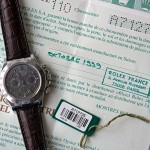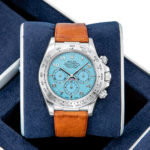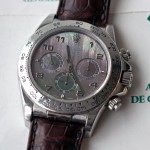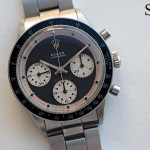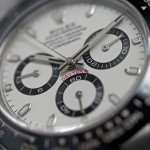The Mysterious Rolex Daytona Zenith “Luna Rossa” at Sotheby’s
A unique red dial.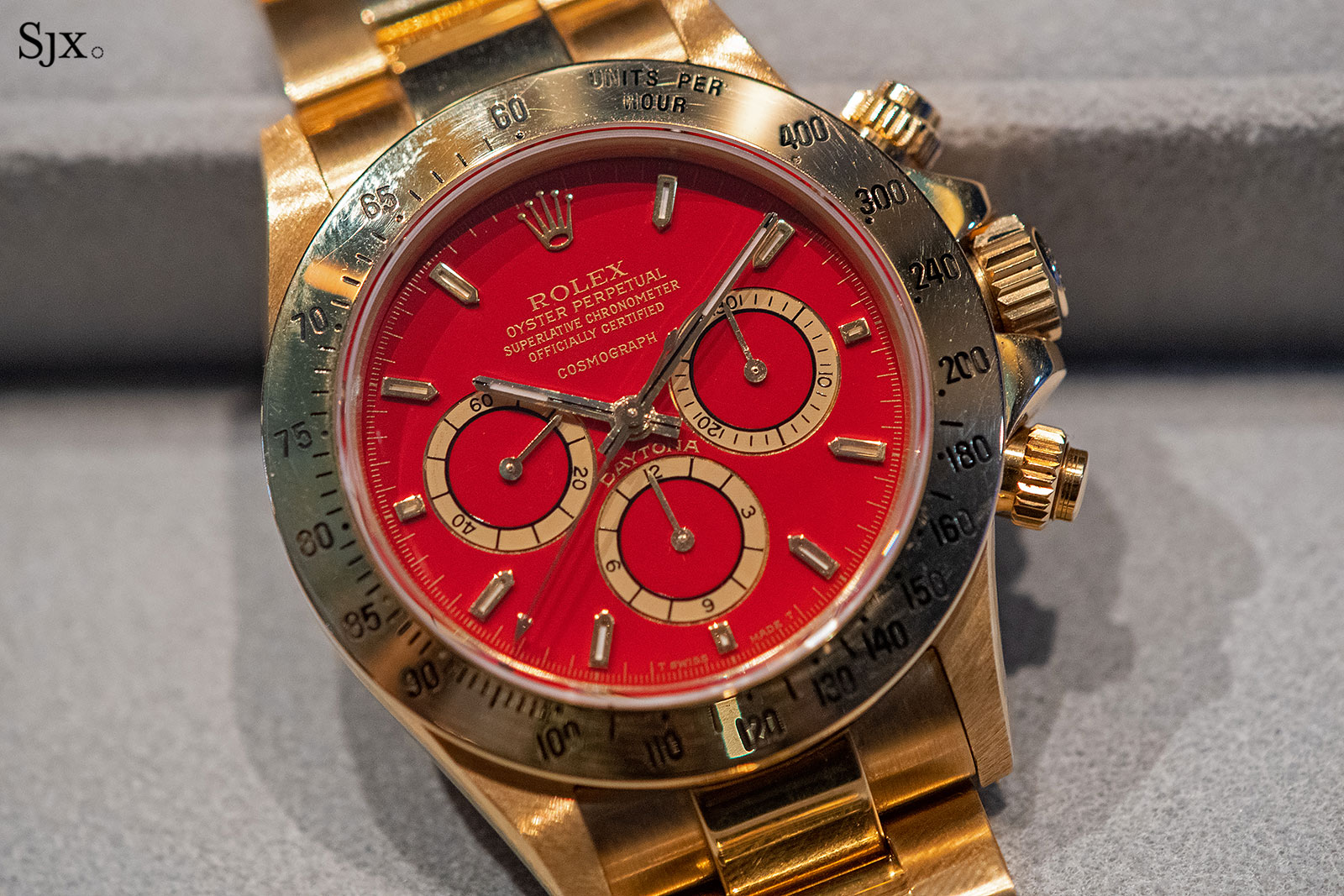
The most talked-about watch at Sotheby’s upcoming Important Watches auction in Hong Kong is lot 2300, a Rolex Cosmograph Daytona powered by a Zenith El Primero movement that’s described as “a possibly unique… chronograph wristwatch with a red dial”. And as with all high-profile watches, the auctioneers have given the watch an Italian nickname, “Luna Rossa”, which translates as “red moon”.
The reason the “Luna Rossa” is controversial is because such a red dial has never ever been seen before. Usually unicorns are known and whispered about, even if seldom seen, but the “Luna Rossa” has surprised everyone.
Experts and insiders I approached have neither encountered nor heard of such a dial, which makes it quite a revelation. But they all agree it is correct – in the sense that all elements are identical to known Rolex dials of the period – though of unknown origin.
Sotheby’s itself hasn’t provided much background about the watch, either officially or unofficially. Unlike the unique platinum Daytona “Zenith” that Sotheby’s sold last year, setting a record price for a modern Daytona, which had a backstory that was I managed to uncover, the “Luna Rossa” remains a mystery.
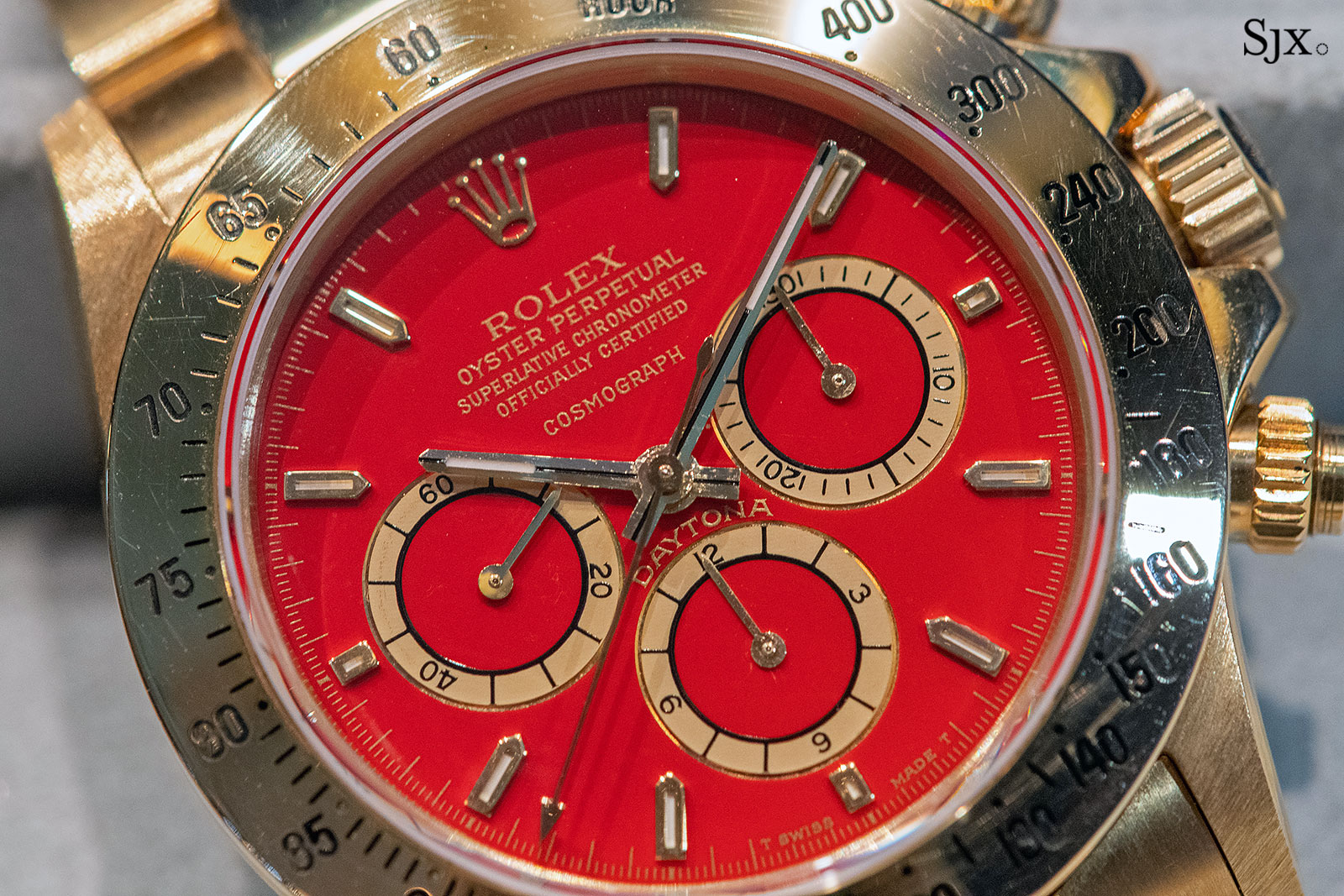
The dial is glossy red lacquer, with gold indices and sub-dials
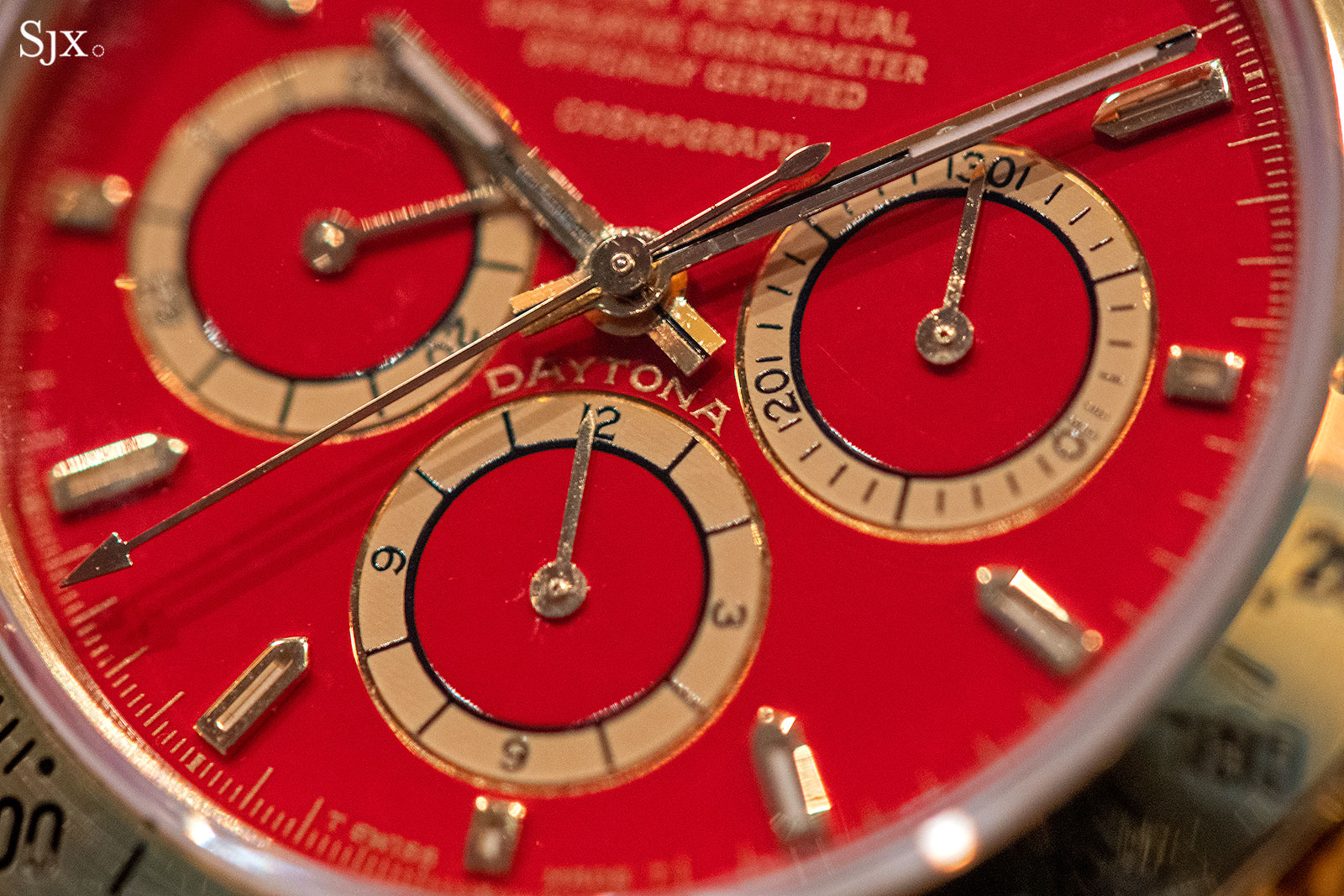
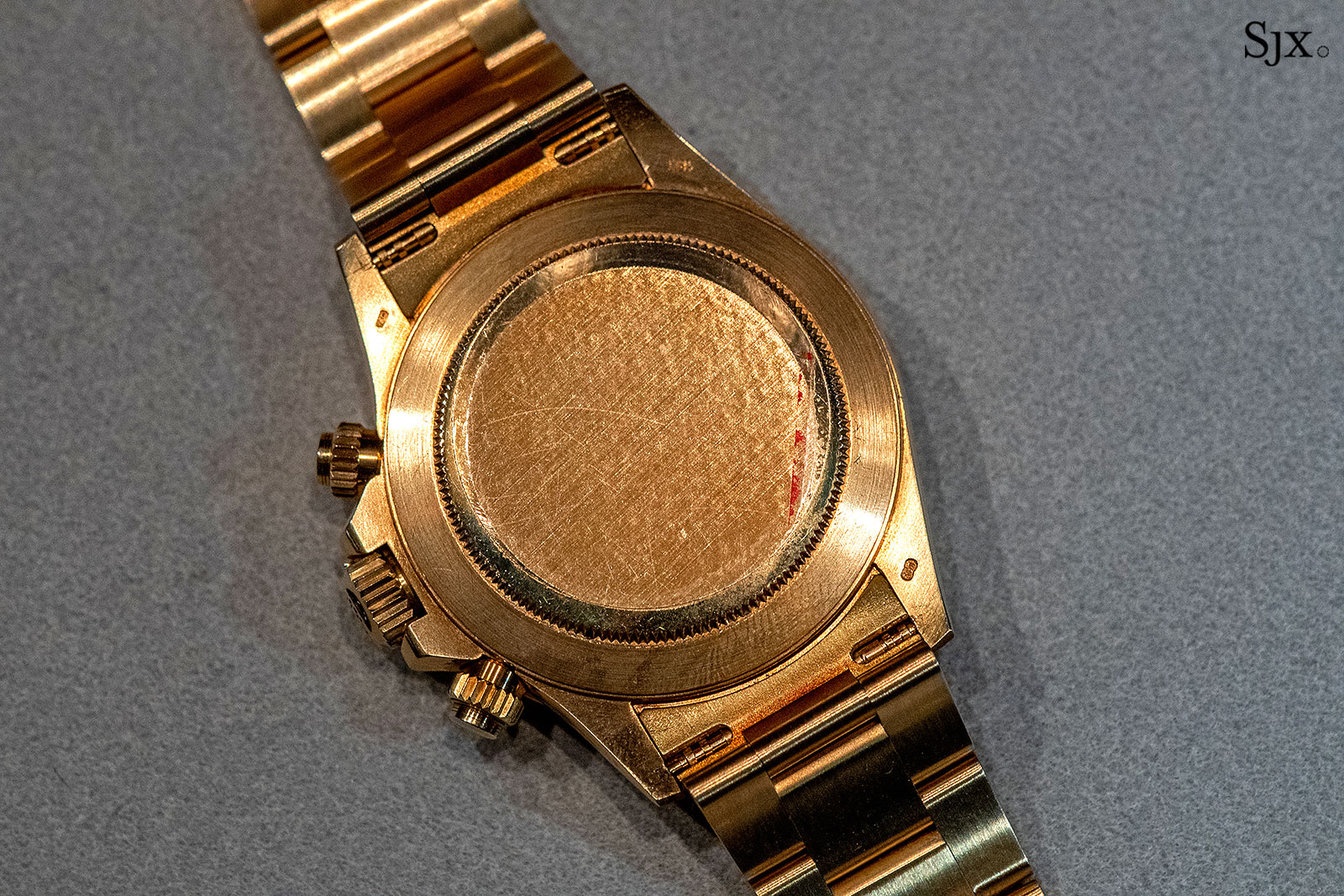
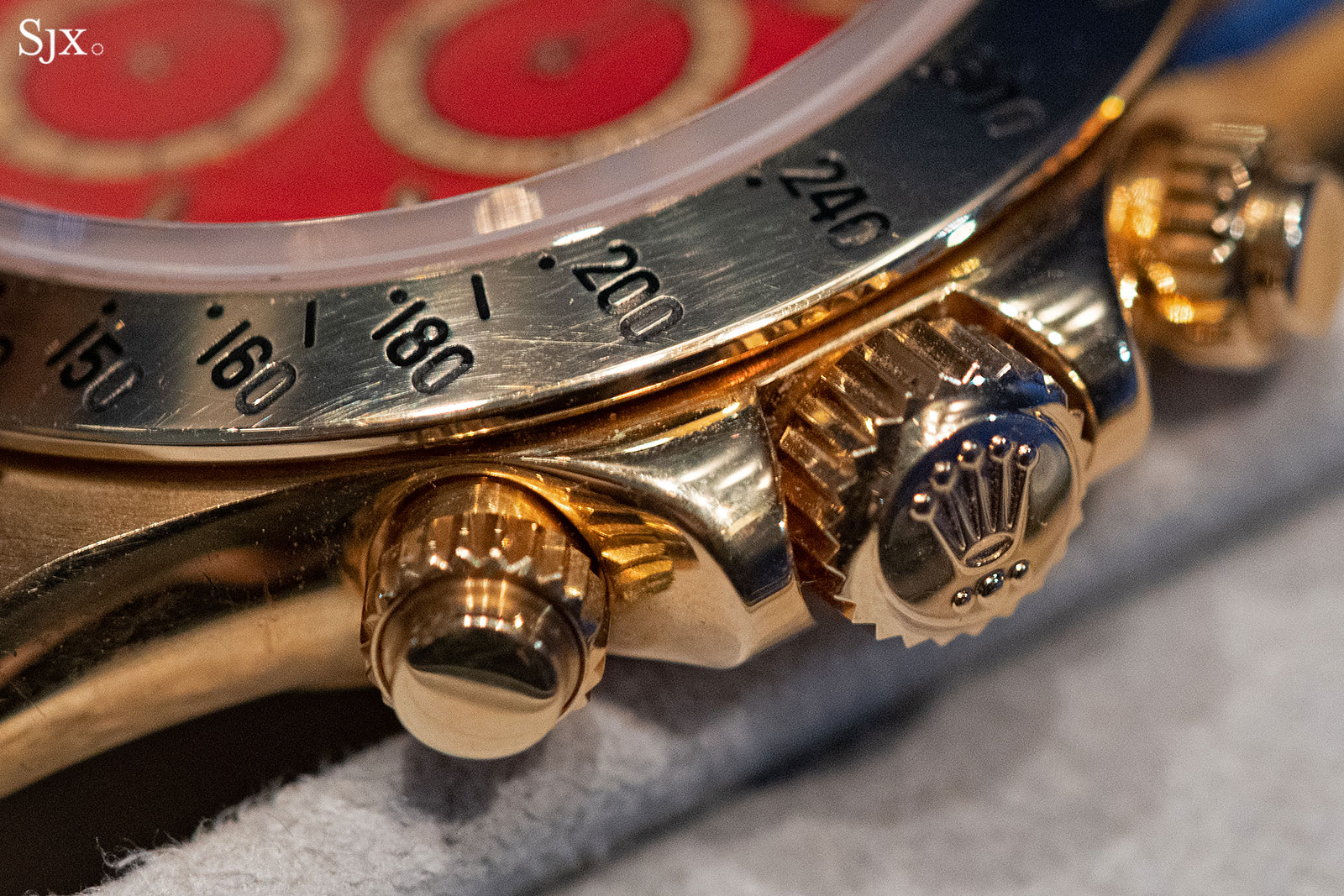
When such unusual dials emerge, the immediate question is one of authenticity. The “Luna Rossa” passes the test – the dial is correct in its details. The element usually regarded as crucial, the typography of the letters and numbers, is the same as that on the standard dials of the period. And the back of the dial is also stamped with the hallmark of dial maker Jean Singer & Cie, which produced the Daytona dials at the time.
In short, the dial was made by the Rolex dial supplier, and subsequently installed in an E-series Daytona ref. 16528 in 18k yellow gold, albeit one that is well-worn. The dial certainly did not leave the Rolex factory in this case as a complete watch, but that is not a revelation as there exist other well-document examples of similar dials.
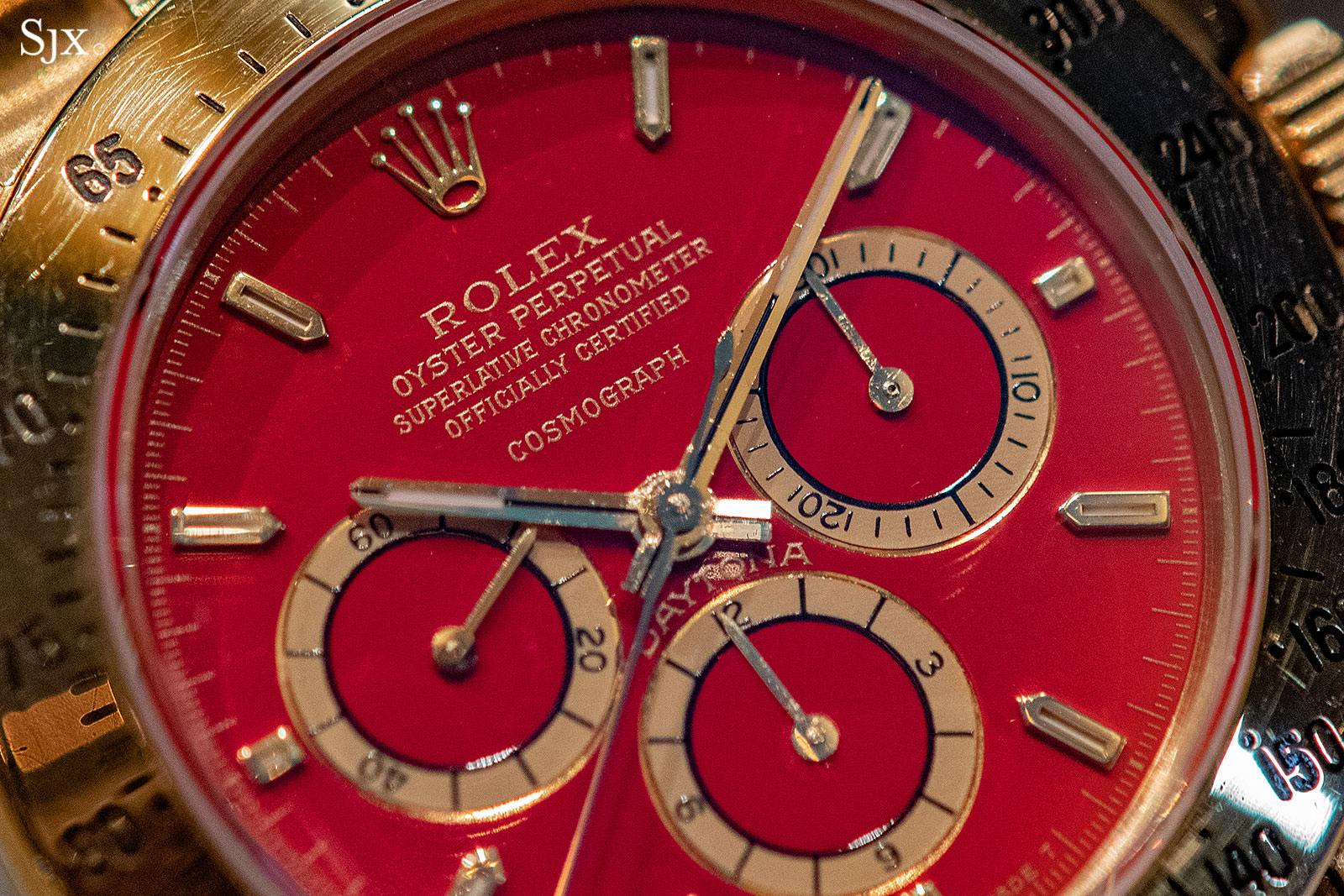
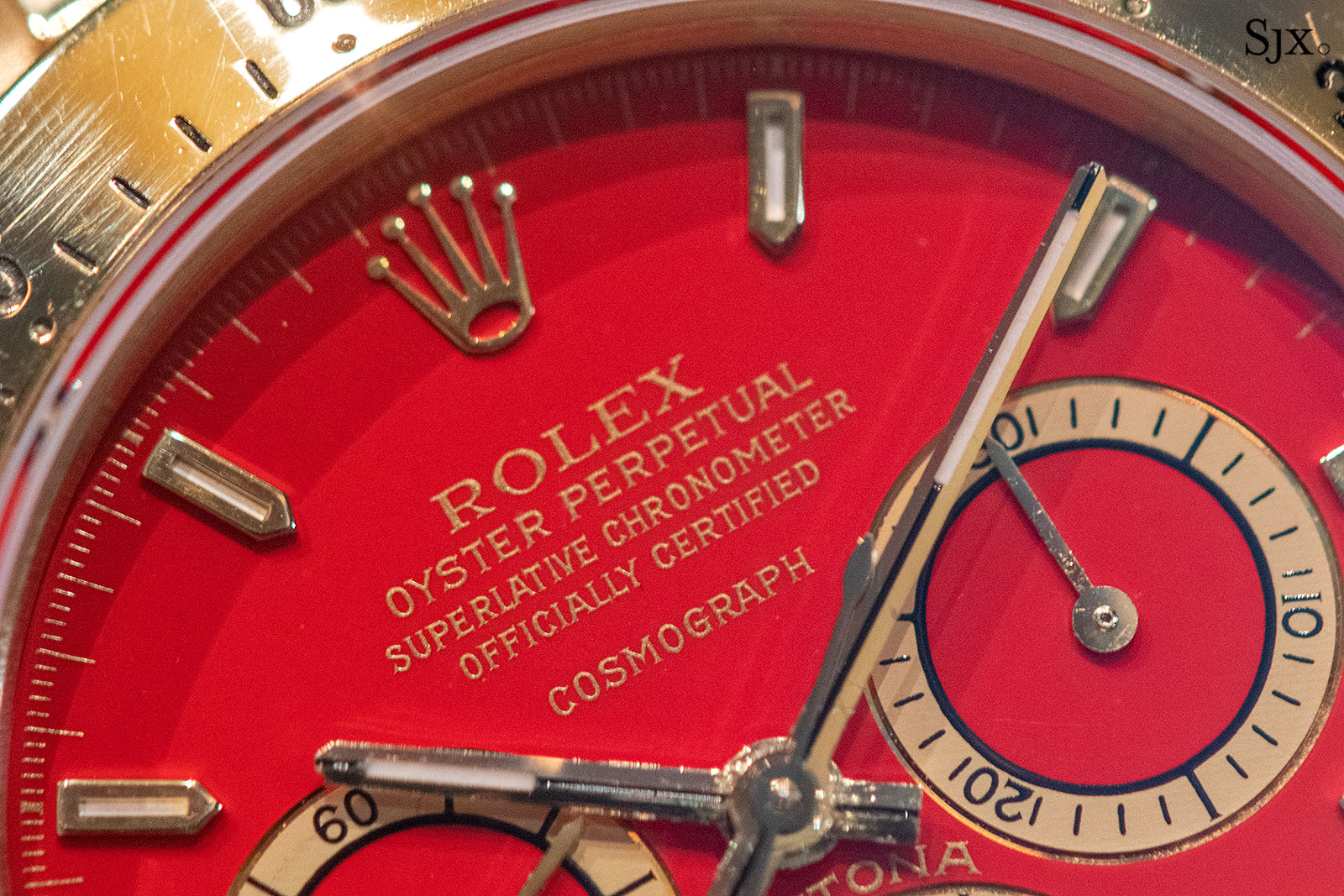
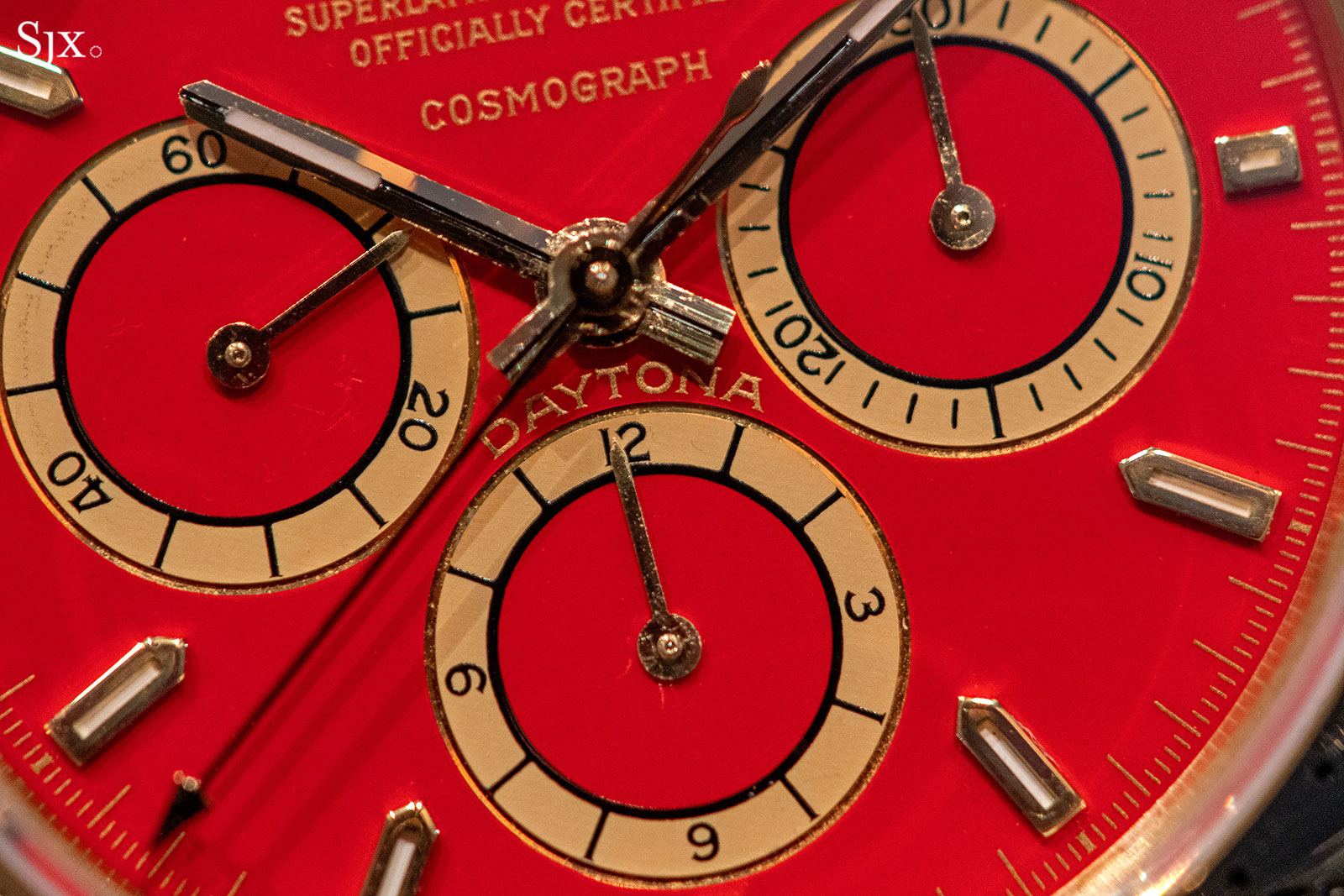
The next question is how the dial came about. Here it gets a bit more hazy. This unique dial could have come about in two ways.
The first is that it was produced by Singer as a sample that was shown to the powers at be at Rolex and then rejected. Or perhaps produced as an experiment – with the same equipment used to manufacture production dials – and never even revealed to Rolex. Such dials (made for Rolex and other brands) are widely known, but exceedingly rare, and have been installed in watches that sold for generous six-figure sums.
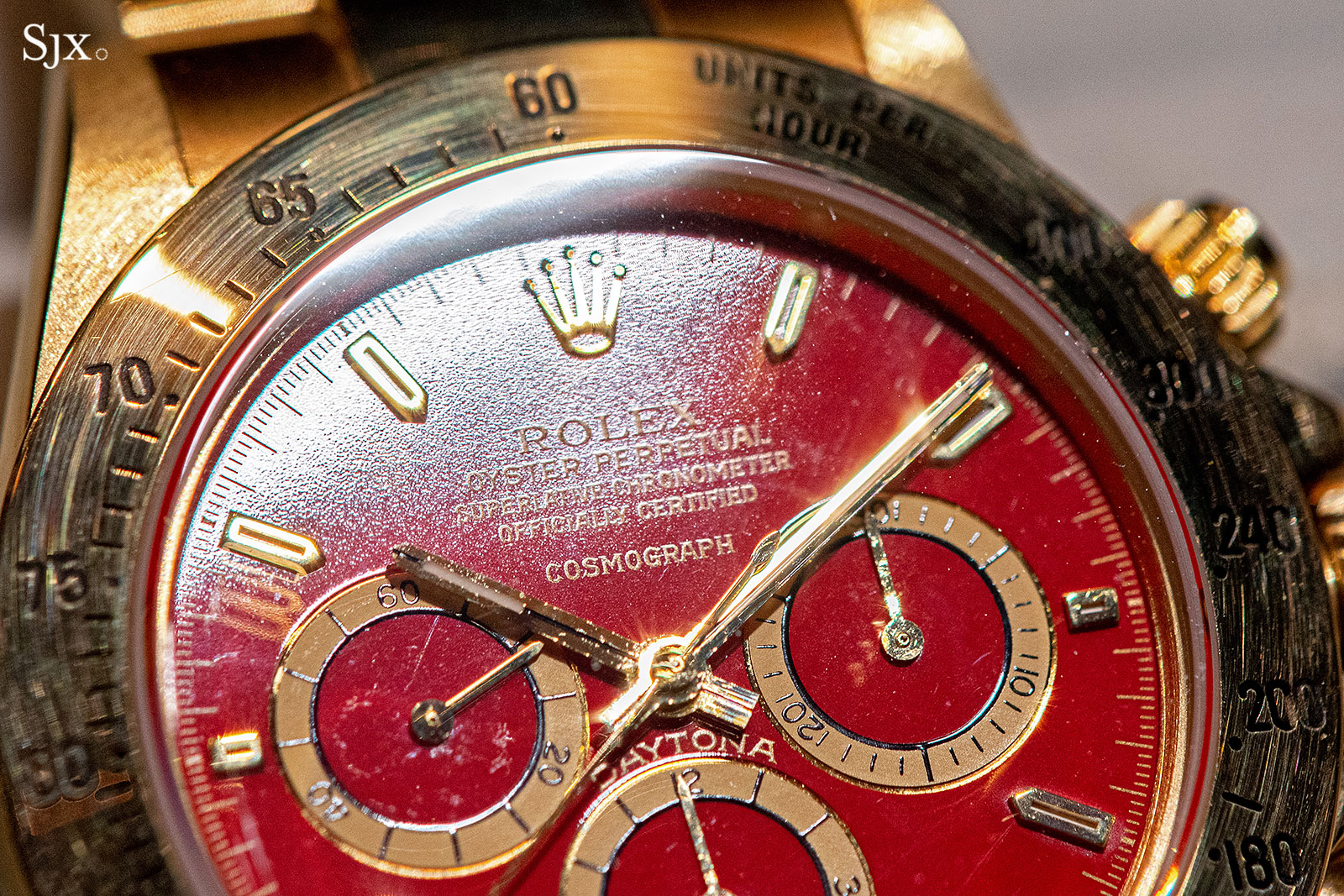
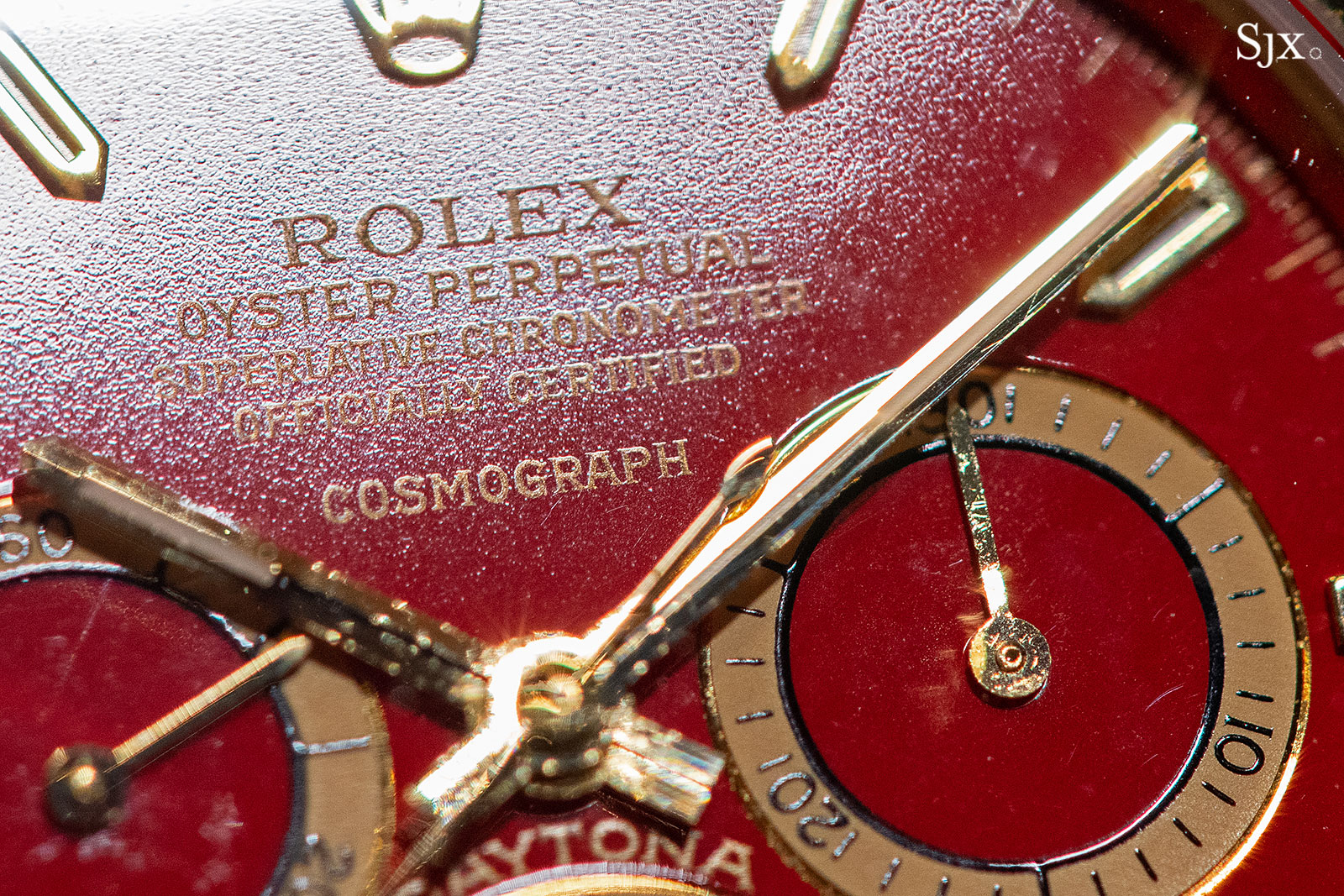
The other is that it was produced by Singer for Rolex, which perhaps wanted a more lively dial colour but then decided not to go ahead with the red-dial Daytona. This is what happened with the metallic blue dials installed on a handful of Daytonas that have been nicknamed “The Big Blue” or “Chairman”.
As the story goes, a small number of such dials were produced by Singer at the request of Rolex but never put into serial production. The loose dials were then given away as corporate gifts and found their way into watches, which are now extremely valuable.
Importantly, this latter scenario gives the watch an official seal of approval, since the dials entered and exited Rolex, though not in finished watches.
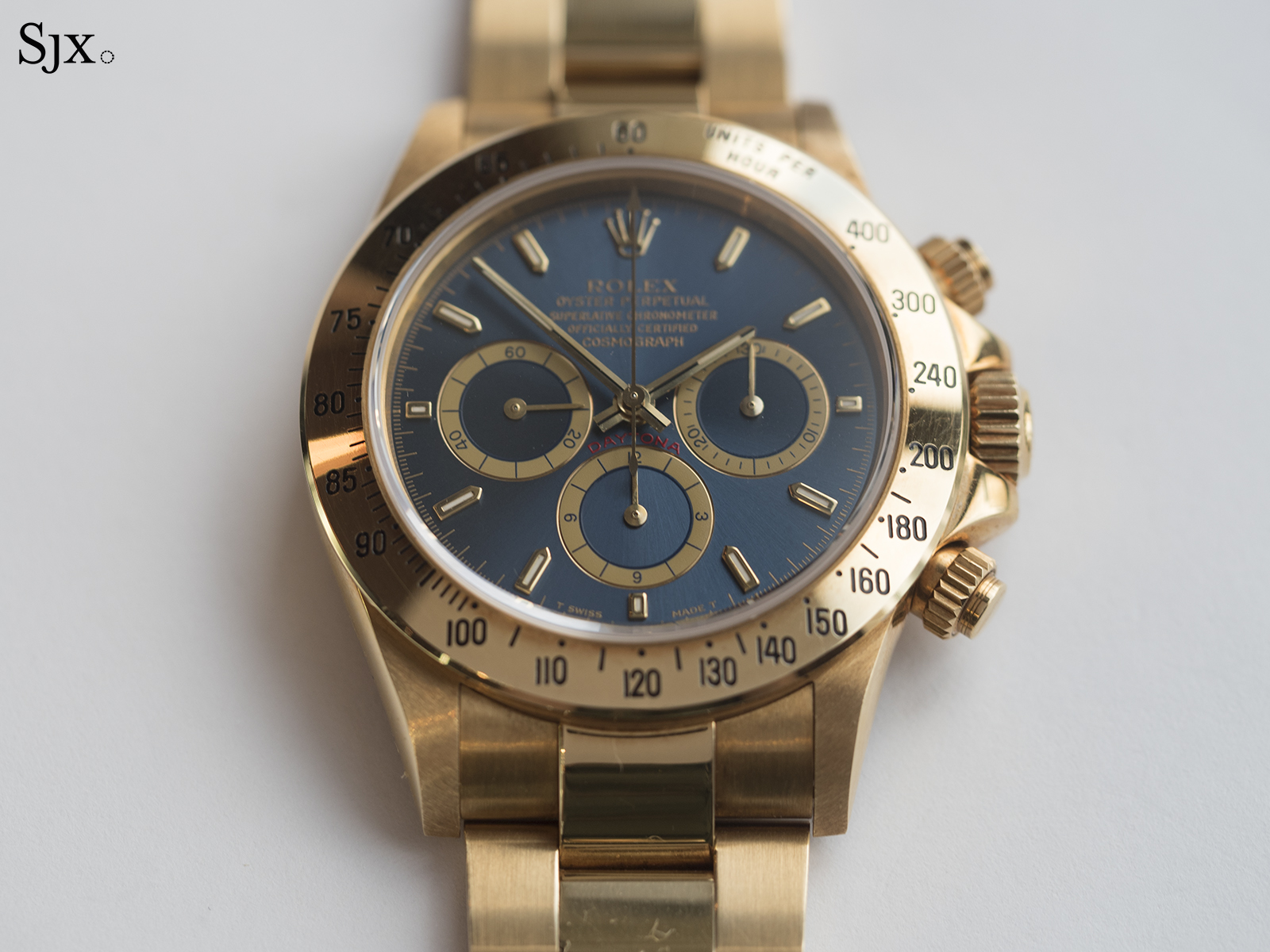
The “Chairman” at Phillips in 2017
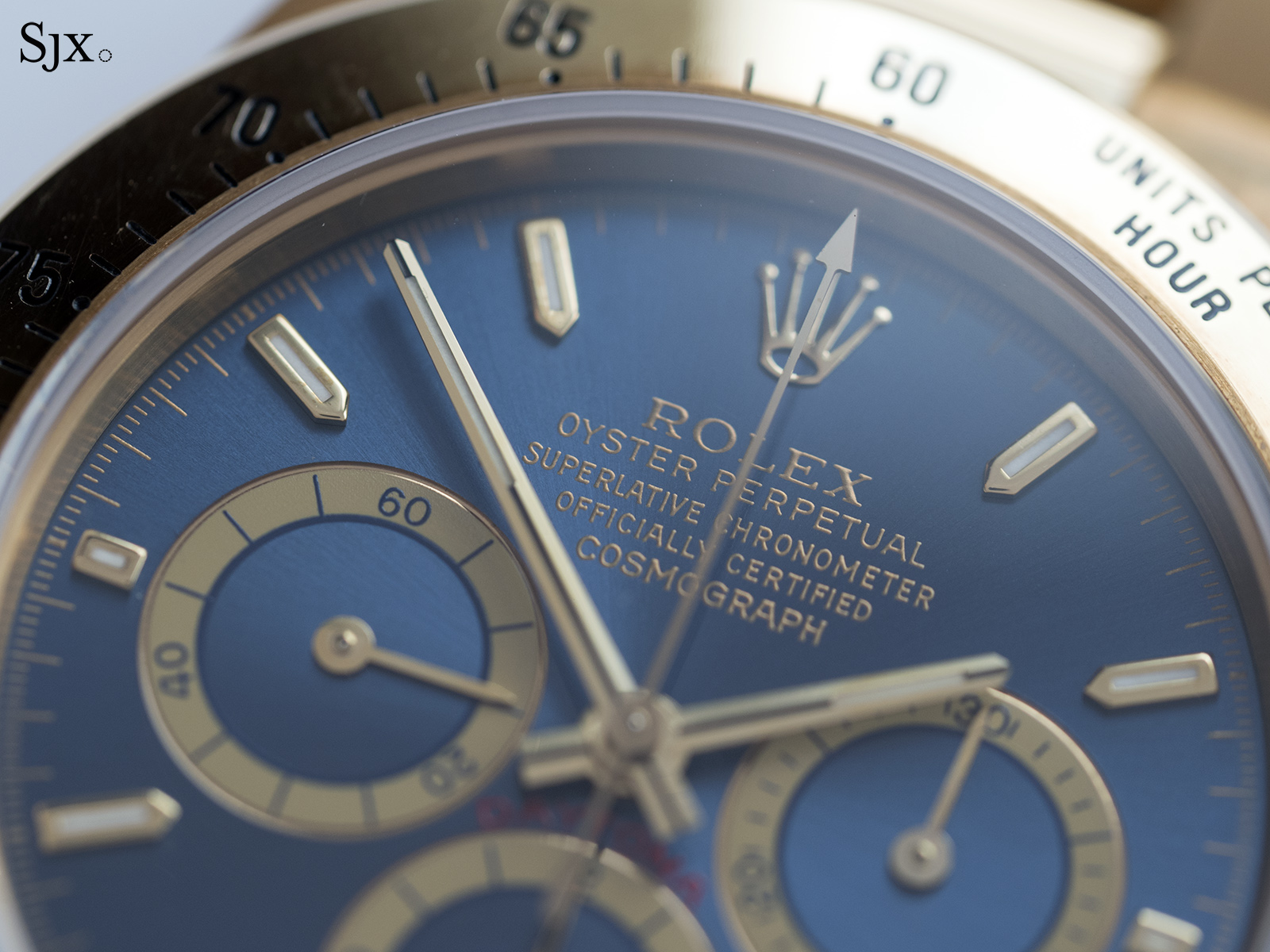
The last “Chairman” to sell publicly went for 552,500 Swiss francs, or about US$550,000, at Phillips in 2017 – essentially half a million dollars just for the dial. The fact that the dials are believed to be official, or at least as official as loose dials can be, no doubt added to the value.
In contrast, the origins of the red dial are unknown. Its price will be an indication of what the would-be bidders believe.
The Rolex Daytona “Luna Rossa” has an estimate of HK$1.6-3.0m, or US$200,000-380,000. For more, visit Sotheby’s.
Update October 10, 2019: The Daytona “Luna Rossa” sold for above the high estimate, finishing at 4.25m Hong Kong dollars, or about US$541,000, all fees included. This puts it in the ballpark of the Daytona “Chairman”, but well below the value of the one-off “Zenith” Daytona in platinum.
Edit September 23, 2019: Minor corrections for grammar and expression.
Back to top.
